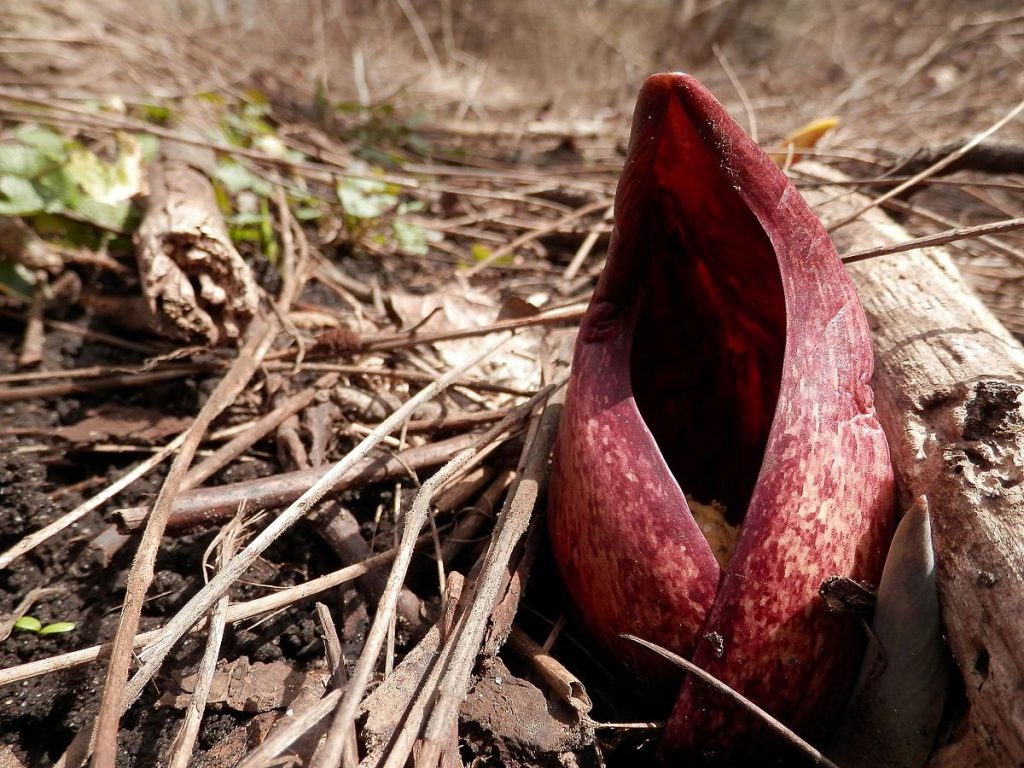
Quiz time: What plant tries to attract flies and digs itself into the ground?
Ah February! It’s 5 degrees outside after an ice storm. Nothing green is poking through that layer of snow and ice. But coming soon (not soon enough is what we all think) new shoots will be just visible, then leaves and flowers! A miracle of nature!
One of the very earliest plants to look for is skunk cabbage (official name – Symplocarpus foetidus). Look in marshy places like Hathaway Pond or at the edges of brooks that cross the bike trail. It’s called skunk cabbage because it smells skunky when any part of the plant is bruised.
Skunk cabbage is an oddity. Unlike most plants, the flowers come up before the leaves, sometime between February and April. Look first for a spotted purple-brown tulip leaf-shaped hood, called a spathe. The hood wraps around the flower stalk, called a spadix, which is a pale green bumpy-looking knob. The actual flowers are very tiny dark-colored dots on the spadix.
Skunk cabbage depends on flies, in addition to bees, to pollinate the flowers. The flower stalk and spathe actually make and give off heat which attracts flies during cold weather. They can give off enough heat to melt snow and leave bare soil around them. When the leaves come out, the plants stand 1-2 feet tall. Native Americans and early settlers used skunk cabbage leaves to treat respiratory diseases, nervous disorders, rheumatism, and edema.
Here’s something skunk cabbage does that very few other plants do. It has contractile roots. The roots actually can pull against themselves after growing into the earth, which pulls the stem of the plant deeper into the mud. In a way the plant is growing downward, not upward. Each year, the plant grows deeper into the earth, so that older plants are practically impossible to dig up.
Keep your eyes open for skunk cabbage while you are enjoying your walk through Marblehead’s conservation lands. It won’t be too long before the flowers are up.
(Photo by Ryan Hodnett, Used Under Creative Commons Attribution-Share Alike 4.0 International)
